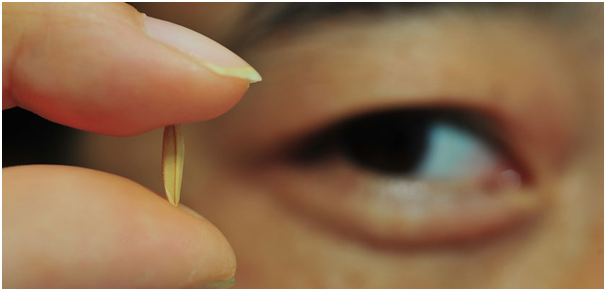Rice is the seed of the grass species (Asian rice or African rice). As a cereal grain, it is the most widely consumed staple food for a large part of the world’s human population, especially in Asia. It is the agricultural commodity with the third-highest worldwide production (rice, 741.5 million tons in 2014), after sugarcane (1.9 billion tones) and maize (1.0 billion tones)
Since sizable portions of sugarcane and maize crops are used for purposes other than human consumption, rice is the most important grain with regard to human nutrition. providing more than one-fifth of the calories consumed worldwide by humans. There are many varieties of rice and culinary preferences tend to vary regionally.
Rice, a monocot, is normally grown as an annual plant, although in tropical areas it can survive as a perennial and can produce a ration crop for up to 30 years.
Rice cultivation is well-suited to countries and regions with low labor costs and high rainfall, as it is labor-intensive to cultivate and requires ample water. However, rice can be grown practically anywhere, even on a steep hill or mountain area with the use of water-controlling terrace systems. Although its parent species are native to Asia and certain parts of Africa, centuries of trade and exportation have made it commonplace in many cultures worldwide.
The traditional method for cultivating rice is flooding the fields while, or after, setting the young seedlings. This simple method requires sound planning and servicing of the water damming and channeling, but reduces the growth of less robust weed and pest plants that have no submerged growth state, and deters vermin. While flooding is not mandatory for the cultivation of rice, all other methods of irrigation require higher effort in weed and pest control during growth periods and a different approach for fertilizing the soil.
The name wild rice is usually used for species, both wild and domesticated, although the term may also be used for primitive or uncultivated varieties of Rice is the staple diet of half the world’s population. More than 90% of the world’s Rice is grown and consumed in Asia, where people typically eat Rice two or three times a day.
3 of the world’s 4 most populous nations are Rice-based societies: China, India, and Indonesia.
The top 10 rice producing countries in the world today are India, China, Indonesia, Bangladesh, Thailand, Vietnam, Burma, the Philippines, Cambodia, and Pakistan. These countries are also among the top rice consumers of the world, and combine to account for around 90% of the world’s rice consumption.
That is why it is fundamentally a kharif crop in India. It demands temperature of around 25 degree Celsius and above and rainfall of more than 100 cm. Rice is also grown through irrigation in those areas that receives comparatively less rainfall. Rice is the staple food of eastern and southern parts of India.
West Bengal is the largest producer of rice in India.
India is one of the largest producers of rice in the world.
SEED QUALITY
Seed is the foundation of any rice crop. It must be grown, harvested, and processed correctly for best yield and quality results. Sowing good quality seeds leads to lower seed rate, better emergence more uniformity, less replanting, and vigorous early growth which helps to increase resistance to insects and diseases, and decrease weeds. As a result, yield can increase by 5−20%.
The viability of seed in the field is determined by its germination potential, and moisture level.
The rate of germination is an indicator of vigor.
Rapid seed germination increases the chance that seed will establish well in the field.
Moisture content is the amount of water in the rice grain.
It influences the life and vigor of the seed. The amount of moisture should be less than 14%, and preferably less than 12% for extended storage times.
CLIMATE FOR RICE CROP
Rice is the basic food crop and being a tropical plant, it flourishes comfortably in hot and humid climate. Rice is mainly grown in rain fed areas that receive heavy annual rainfall It demands temperature of around 25 degree Celsius and above and rainfall of more than 100 cm.
Paddy cultivation should not be confused with cultivation of deepwater rice, which is grown in flooded conditions with water more than 50 cm (20 in) deep for at least a month. Genetic evidence shows that all forms of paddy rice. spring from a domestication of the wild rice that first occurred 8,200–13,500 years ago South of the Yangtze River in present-day China However, the domesticated subspecies currently appears to be a product of the introgression of favorable alleles from japonica at a later date, so that there are possibly several events of cultivation and domestication Paddy fields are the typical feature of rice farming in east, south and southeast Asia. Fields can be built into steep hillsides as terraces and adjacent to depressed or steeply sloped features such as rivers or marshes. They can require a great deal of labor and materials to create, and need large quantities of water for irrigation. Oxen and water buffalo, adapted for life in wetlands, are important working animals used extensively in paddy field farming.
Farm development for rice cultivation





